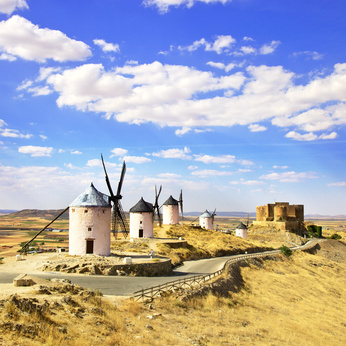It’s always an advantage when learning a new language to know a bit about its history and relevance in the modern world. Here are some interesting facts about the Spanish language:
- Spanish and English are roughly tied for second place after Mandarin for the number of native speakers in the world at around 335-340 million individuals. Spanish accomplishes this in roughly half the number of countries as English, with 21 versus 42 in which Spanish and English are the official or co-official language.
- The mother language of Spanish, and indeed all Romance languages, (i.e. Italian, Romanian, Spanish, Catalan) is Latin. Modern Spanish formed in the late 14th century in the region of Spain known as Castile. It is for this reason that Spanish may also be referred to as castellano.
- Spanish has undergone far less changes than English in last 500 years. Therefore, fluent speakers of modern Spanish have little trouble reading the literature of Cervantes. Cervantes was the author of Don Quixote, arguably the first modern novel, and a contemporary of Shakespeare. English readers on the other hand generally need footnotes to interpret works by Shakespeare.
- As English and Spanish are both Indo-European languages with a strong influence from Latin they share a lot of similar vocabulary allowing English speakers to learn Spanish with relative ease. Some of the largest differences between the two languages include: the existence of gender in Spanish for all nouns, Spanish having a more expansive number of verb tenses and the relatively common use of the subjunctive mood in the Spanish language.
- While English has borrowed words in from numerous languages around the world it is Arabic that has had the greatest influence on Spanish, aside from Latin. Roughly 3000-4000 words have made their way into the Spanish language. Most of this occurred during the years between 711-1492 when Arabic people were in control of the greater part of the Iberian Peninsula, home to the countries of Portugal and Spain. Some of these words have also filtered down into the English language. For example, the Spanish word for cotton is algodón. Once you know that ‘al’ represents the word for ‘the’ in Arabic and isolate ‘godón’ you can start to see the connection to the word ‘cotton.’
- While Spanish is originally from Spain, the number of native speakers in Latin America is now roughly 3 times that of modern-day Spain. Minor differences between the languages are found in vocabulary and idiomatic expressions but there are also some major differences. First off, most speakers of Spain speak with a lisp forming the sound of ‘th’ when pronouncing the letter ‘z’ and the letter combinations ‘ce’ and ‘ci.’ (Much less commonly, some regions also lisp the letter ‘s’). Secondly, speakers in Spain distinguish between informality and formality when addressing more than one person at a time by using vosotros for informal “you all” and ustedes for the formal. In Latin America, the latter is used for both.








